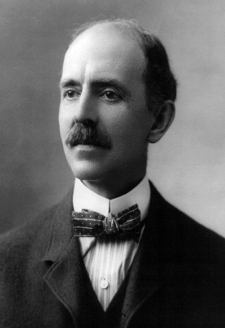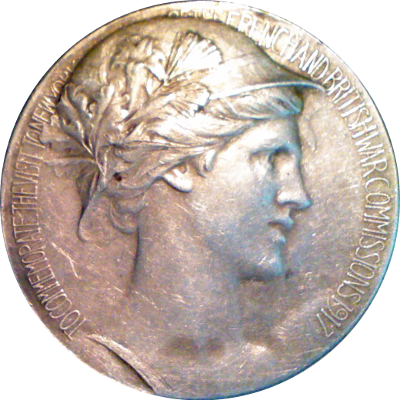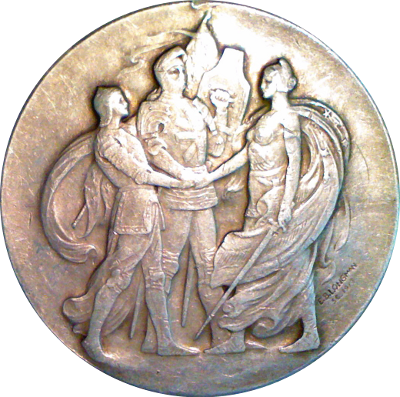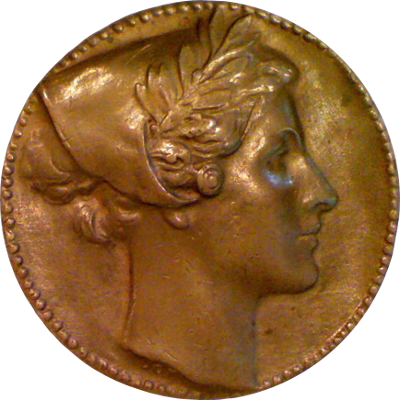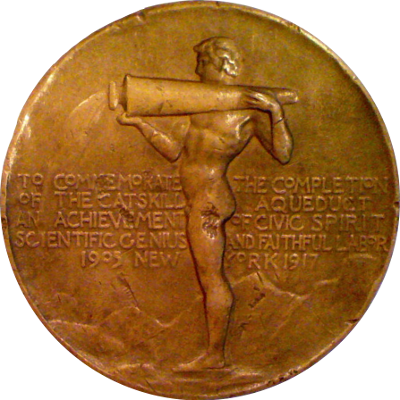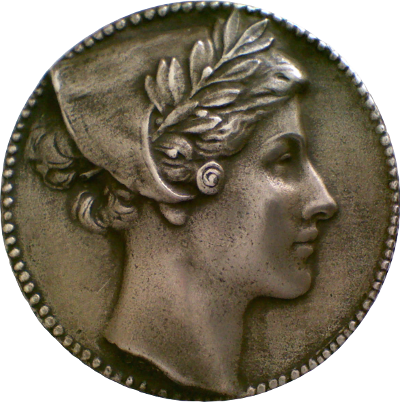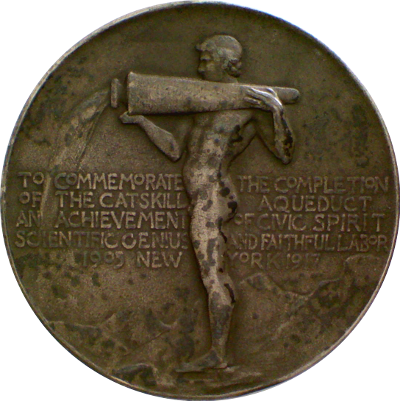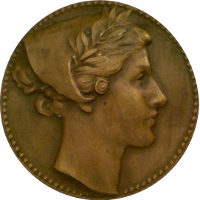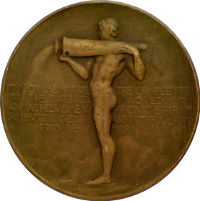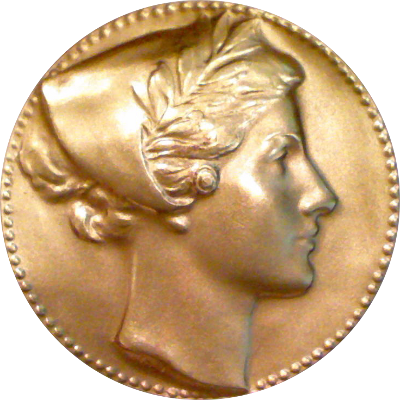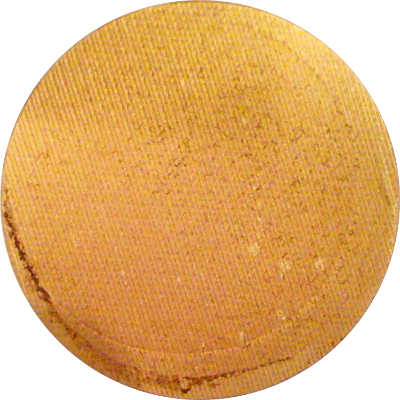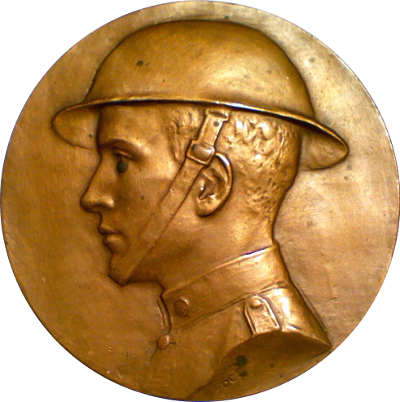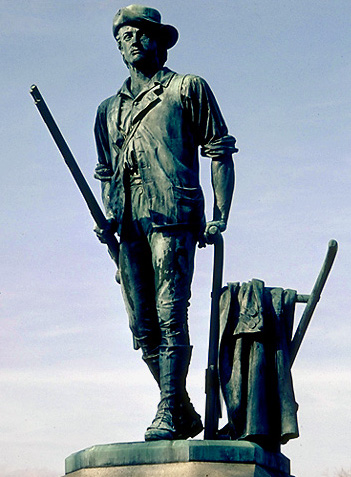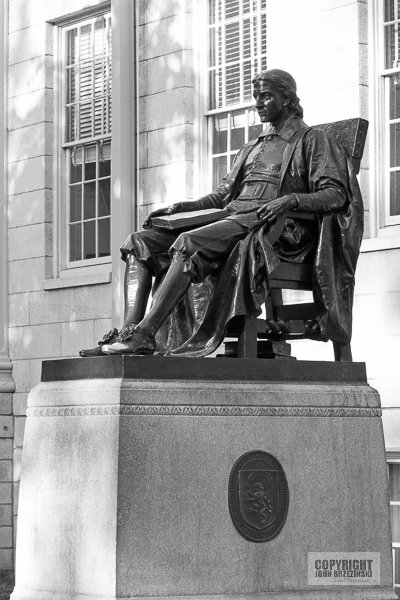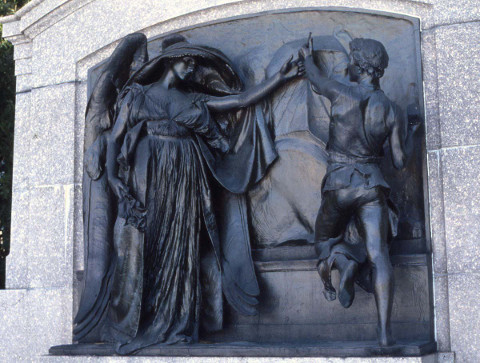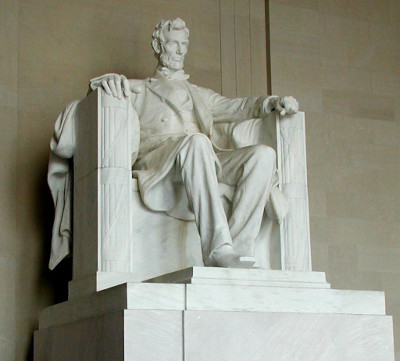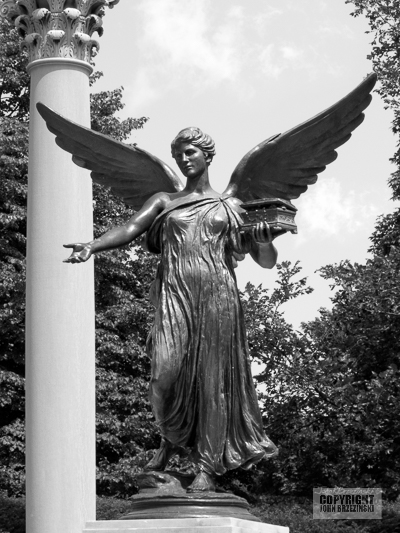Daniel French was born in 1850 in Exeter, New Hampshire. His father, Henry Flagg French, native of Chester, New Hampshire, was originally working as a lawyer but soon became a judge and the family moved to Massachusetts. They lived in Cambridge and Amherst before finally settling in Concord in 1867. French always remained fond of his New Hampshire roots and decided to use "Chester" as a middle name for that reason.
French had a very uneven educational career, spending one year at MIT before dropping out to pursue his artistic passions. Back in Concord, the family were neighbors to the famous Alcott family and French received his first serious instruction in sculpture from Abigail May Alcott during the winter of 1868-69. A brief, month-long apprenticeship with John Quincy Adams Ward followed in 1870, supplemented by evening drawing classes at the National Academy of Design. It seems that French was just not cut out for formal education.
French's big break came in 1873 when his hometown of Concord commissioned The Minuteman to commemorate the centennial of the Battle of Concord. French undoubtedly received some preferential treatment due to his friendship with Ralph Waldo Emerson, another family friend and neighbor, but the finished statue certainly rewarded Emerson's trust in French.
Like all American sculptors of note, French departed for Europe to study with his European peers. Unlike most, he chose Italy over France. Between 1874 and 1876 he lived in Florence with sculptor Preston Powers and studied with another Massachusetts expat, Thomas Ball. In 1876 he returned to the United States and opened his own studio.
French soon had studios in Concord, Boston, and Washington, D.C. Over the following decade he earned commissions for sculptures on public buildings in Saint Louis, Philadelphia and Boston. He also worked on many portrait sculptures, including the bust of his friend Ralph Waldo Emerson and the statue of John Harvard at Harvard University. In 1886 he finally decided to spend time in France to study Beaux-Arts sculpture. This brief nine-month period would prove extremely influential on his style.
Upon his return from Paris in July 1887 he frequently used the draped female figure in his work. Some of his most impressive monuments - the Milmore Memorial, the John Boyle O'Reilly Memorial, and the Melvin Memorial - are the result. But French did not just use draped females as symbols of death in funereal sculpture, he also used them to represent life in sculptures like The Spirit of Life.
In 1888 French was married to Mary Adams and in 1889 their only child, Margaret, was born in Concord. Margaret would later leave the French summer residence in Glendale to the National Trust for Historic Preservation and it is open to the public on a seasonal basis.
His best known monument is the Lincoln Memorial in Washington, D.C., for which French completed the massive seated Lincoln. The sculpture is composed of twenty blocks of Georgia marble, carved in the Bronx studio of the Piccirilli Brothers, and assembled on site in Washington.
French did not design many medals, but the few he did are true masterpieces: the Catskill Aqueduct Completion Medal (1917), the American Red Cross Medal (1920), and the Art Students League Medal are all highly sought after by collectors.
In addition to being a sculptor, French was also a generous donor of time to many artistic organizations. He served as a trustee of The Metropolitan Museum of Art from 1903 until his death in 1931 and always supported the American Academy in Rome, the Art Students League, the National Arts Commission, and the National Sculpture Society.
Sourced from the listed sources in Resources section.
